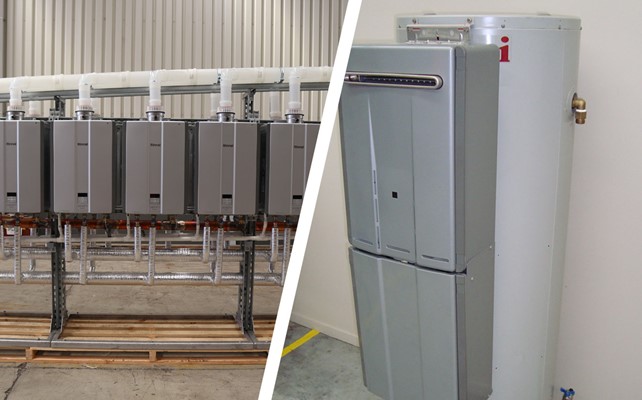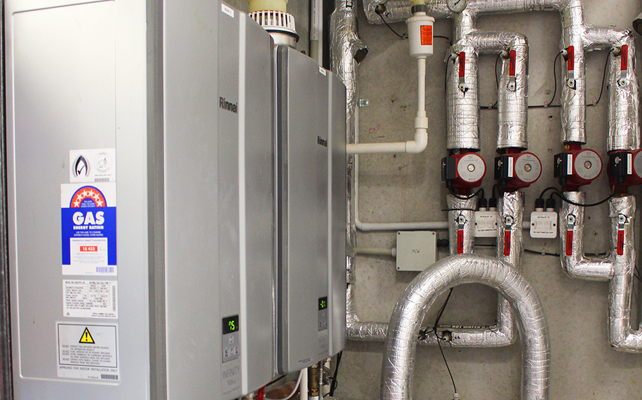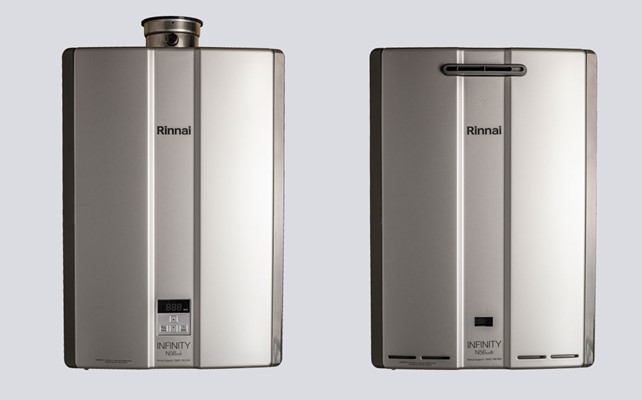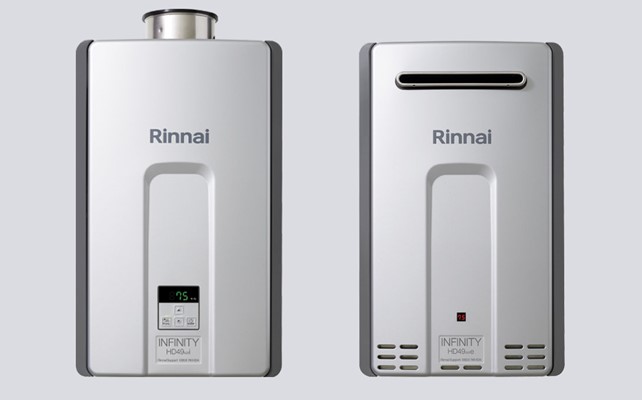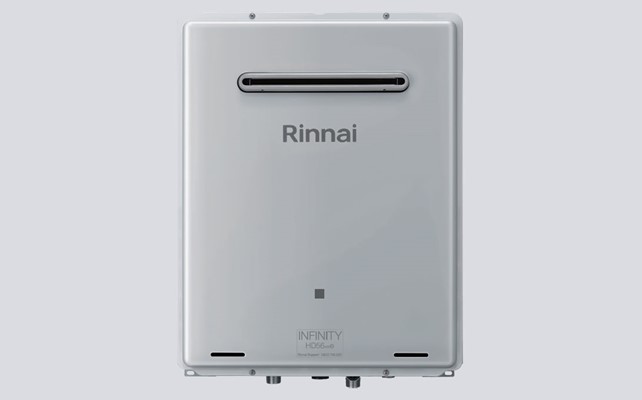All the latest news and views from Rinnai

We are seeing an increase in enquiries from plumbers wanting to replace existing Raypak boilers that have come to the end of their economical service lives. Commercial Rinnai INFINITY® systems are an excellent replacement for these.
Here are a few things to keep in mind when carrying out this replacement upgrade.
Raypak units are usually plumbed to storage tanks in a manner that promotes mixing in the storage tank. This is required as the temperature output from the Raypak is less stable than from a Rinnai INFINITY® commercial unit.
To achieve this, the Raypak draws water from the middle port of the storage tank and returns it to the lower port. On occasion, the cold water connection to the system is also made to the middle port.

Rinnai INFINITY® commercial water heaters control their hot water output temperature very accurately. To take advantage of this and promote energy efficiency when replacing a Raypak unit, the boiler flow and return should be reversed, and the cold inlet should always be connected to the lowest port of the storage cylinder.
When using multiple Rinnai boilers, they should be plumbed reverse return as shown below.
Do not use Rinnai electronic connections between boilers in these types of systems.

We commonly see the pump controlled by and powered from the Raypak boiler. Raypak do have an option tank thermostat to ensure the system is controlled to prevent legionella but we very rarely if ever see these in the field. We also see pumps separately powered and running 24/7.
For the Rinnai system, the pump should be powered from and controlled by a Rinnai Pump thermostat, part number DDTSTAT234. The DDTSTAT has a special feature that allows the system to self-reset every 30 minutes in case of gas supply failure.

This controller requires a standard 3 pin socket for power input. It has standard 3-pin sockets inbuilt for connecting single or dual boiler pumps. In many cases the existing pump can be used and will need a standard 3-pin plug fitted to the power lead so it can be connected to the DDTSTAT controller.
The pump sensor needs to be installed in a pocket in approximately the bottom 25% of the storage cylinder in a position between the cold inlet and boiler return connections. If renewing the storage tanks also please consider the Rinnai MEC 450 litre enamel steel cylinder which has a sensor pocket in the appropriate place. Existing Rheem 610 series tanks also have an inbuilt sensor pocket.
The Rinnai INFINITY® boilers are set to 70°C or 75°C (refer installation manual for procedure).
To prevent short cycling of the boilers, the Pump ON temperature should be as low as possible to ensure the customer has sufficient hot water.
The pump OFF temperature should preferably be:
e.g:

Pumps should be suitable for potable water duty. This usually means stainless steel or bronze. Look for AS4020 certification or Watermark. We have seen a number of systems with cast iron pumps that are not usually compatible with potable water. The Grundfos UP pump series for example has the stainless steel construction denoted by an N suffix on the part number. For smaller systems with up to two Rinnai INFINITY® units, single-stage circulators such as a Grundfos UPS2580N usually have sufficient capacity. For larger systems please consult Rinnai customer service.
